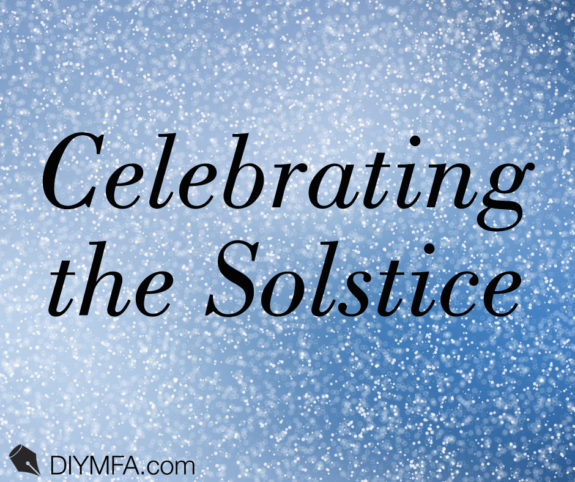This column was due on December 24th. Anyone surprised that my thoughts turned to the season and to celebrations of the winter solstice?
If you and your story live within the Judeo-Christian tradition, you’ll no doubt have a good handle on Christmas and Hanukkah. But, for Christmas in particular, how did some of the traditions we now think of as universal come into being? Evergreens, holly, and mistletoe came from the ancient Celtic and Druid traditions. The yule log came from the Scots. The word Yule itself comes from ancient Norse folk who viewed the sun as a circular disk around which people’s lives revolved, and the winter solstice as the renewal of that circle, bringing more light back into the world.
Epiphany (in western Christianity) or Eastern Orthodox Christmas is thought to have evolved from the ancient Egyptian calendar, in which the solstice occurred on that date.
And don’t forget the celebration of the Feast of Saint Lucia. Originally just a festival of lights in the Norse world, it’s been incorporated into the Christian tradition, retaining its devotion to light but adding the dedication to the Christian martyr.
Not every story will be within these traditions, though, so getting the celebrations right for other times and other cultures might require a bit more research. Here are some things to get you started.
Winter Solstice Traditions from Around the World
Dong zhi
Thought to have originated as an end-of-harvest festival, it’s a time for Chinese families to gather together and celebrate the year they have had
Inti Raymi
The Incan winter solstice celebration of the sun god that included feasts and sacrifices. It was banned by the Spanish conquerors but revived in the 20th century (without the sacrifices), so getting the timing right for your story is important. Another important aspect of getting the timing right is to remember that Peru is in the southern hemisphere – so the winter solstice occurs in June.
Saturnalia
The ancient Roman celebration of the solstice and the end of the harvest season. It included several days of games, feasts, and gift-giving and may be the ancient holiday most closely associated with Christmas. Interestingly, during Saturnalia, slaves were actually given time off and were treated as equals to their masters.
Soyal
Celebrated by the Hopi people to welcome the kachinas, the protective spirits from the mountains. The rituals include purification, dancing, and sometimes gift-giving.
Yalda
The Persian celebration of the victory of light over dark and the birthday of the sun god, Mithra
Korochun
While most of these festivals celebrate light – not unexpected on the longest night of the year – there’s an interesting variation in the Slavic celebration of Korochun. On this day, Hors, the sun, dies, defeated by the powers of the Black God. But the sun is resurrected the following day as Koleda, the new sun. On Korochun, celebrants may light fires in cemeteries to keep their ancestors warm.
This is far from a definitive catalog of winter solstice celebrations. My objective was only to inspire. No matter what era or place in the world, people have been celebrating at this time of year since ancient times. And as writers, we can have our characters celebrate properly for the time and place in which they live.

Pamela Taylor’s inspiration for her first book turned out to be that final straw that pushed her to leave the corporate world behind for the world of words and imagination. Now an author and an editor, she loves helping others polish their stories almost as much as she enjoys writing her own. She’s a member of the DFW Writers Workshop and the Editorial Freelancers Association and recently completed her third year on the judges panel for the Ink & Insights Contest. You can learn more about her at https://pamela-taylor.com and about her editing services at editing4you.com.







